It’s now 30 years since the launch of the Lotus Carlton, and the subsequent newspaper frothing and heated political debates about the family saloon’s 180mph top speed only serve to cement its legendary status. At the time, in 1990, the Lotus Carlton was labelled too fast for the road by national newspapers, with the likes of The Daily Mail campaigning to have it banned, and the Association of Chief Police Officers branding it ‘an outrageous invitation to speed.’ Questions were even raised in the Houses of Parliament about the wisdom of allowing such a car on the road.
For the then Lotus boss Mike Kimberley and his colleagues at General Motors, the controversy was a major headache. Even today, Mike still feels somewhat aggrieved by an Autocar cover story that kickstarted the maelstrom.

“Bob Murray got his knickers in a twist – we were all patting ourselves on the back, then Autocar came out, we couldn’t understand it.” At the time, Murray was the editor of the weekly car magazine, which carried influence in the boardrooms of car makers around the world. “There was Ferrari, Lamborghini, Porsche, top speeds off the clock, then suddenly Bob Murray, with a top reputation, came out with this terrible perspective,” he recalls. “It went round and round – the media causing trouble for a headline, Parliament… We decided we wouldn’t do anything about it.”
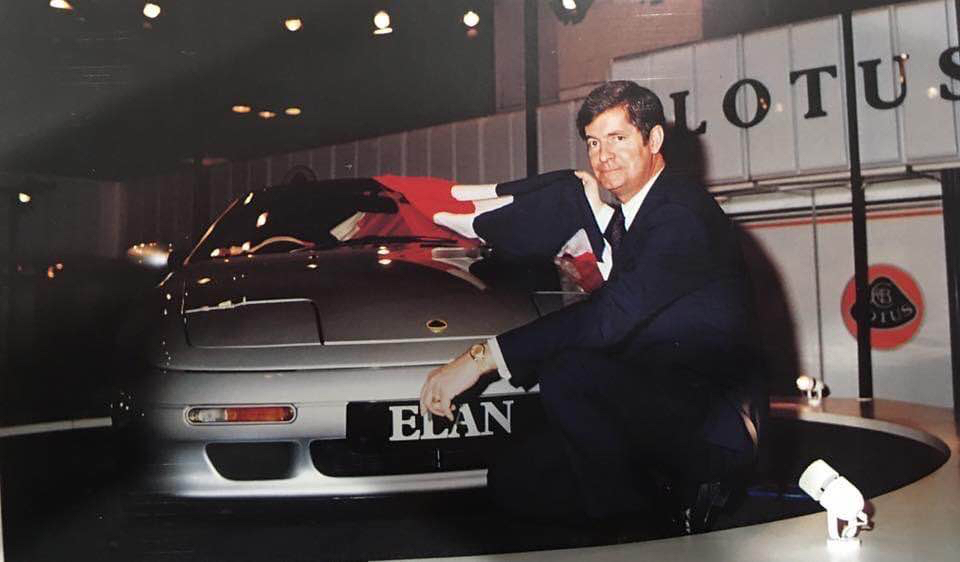
Mike was more invested than most – not only was he boss of Group Lotus Plc, he had originally pitched the idea of the Lotus Carlton (and Lotus Omega, in markets that used the Opel brand), following GM’s takeover of Lotus in January 1986. “We could all see Opel were really well-engineered cars that were refined and comfortable, but they were bland in my personal opinion. I thought they could be enhanced with a top-of-the-range model, the sizzle on the steak as our American friends would say.”
Lotus Engineering was perfectly placed. By the end of 1985, it was working for every global OEM bar one (no, Mike wouldn’t tell), and was expert in everything from vehicle dynamics to composites and engines to design. Its independence continued under GM, which agreed it could work for rivals in full confidentiality, and wouldn’t send GM employees to visit without the approval of Bob Eaton, GM’s vice president of engineering.
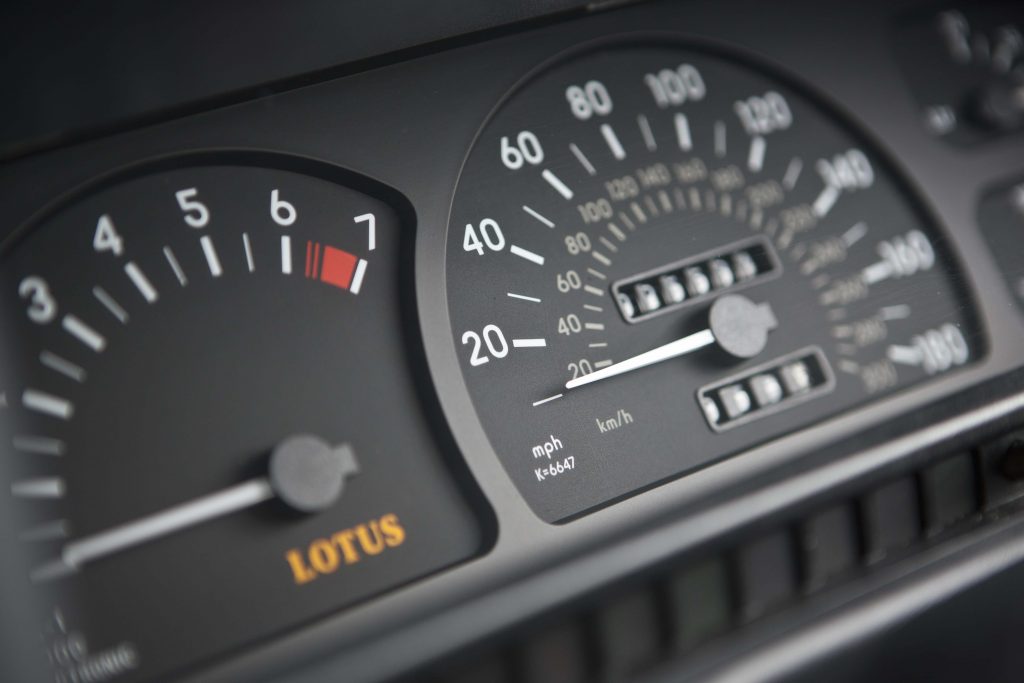
But when Jack Smith was promoted to run GM Europe, Mike identified an opportunity for Lotus Engineering to work its magic on a GM flagship and prove the marriage of GM and Lotus was a success. That flagship was a large saloon produced by GM subsidiary Opel and sold by both Vauxhall and Opel – but it’s probably not the one you’re thinking of.
‘I started to lobby Jack in 1987 and we pitched the concept of a top-of-the-range Senator, based on Lotus Cortina principles,’ Mike remembers. ‘Jack loved the concept, he pushed it. Julian Thomson was one of our top designers [now director of design at Jaguar], and he penned a lot of concepts, renderings and pictures for me to put in front of Jack in Zurich, though he had a lot on his plate with a very difficult remit corporately. I said that if we use the Lotus badge on any product it had to be the best in world class, otherwise it would drag down the Lotus brand.’
The proposals were met with some reluctance despite Jack’s enthusiasm, but when he was called back to Detroit in the summer of 1988 as his career was fast-tracked, Bob Eaton took over as president of GM Europe. Mike and Bob already had a good working relationship, having collaborated on Lotus Engineering projects in the pre-GM ownership days, and the new boss maintained his predecessor’s support for the project, as Mike explains. “Bob was a real champion of Lotus, he really got a grip of the project in GM Europe, and I was there at the first GME strategy board meeting in Zurich. Peter Hanenberger, GM vice president and group executive of Opel’s Technical Development Centre (TDC) was supportive, Fritz Lohr was there, head of TDC Opel, a very influential and switched on engineer. [European design boss] Wayne Cherry was a real positive influence, and one of Bob’s top marketing people, Don Sullivan, was in favour, together with Paul Tosch, [the chairman] of Vauxhall, a very good guy.”
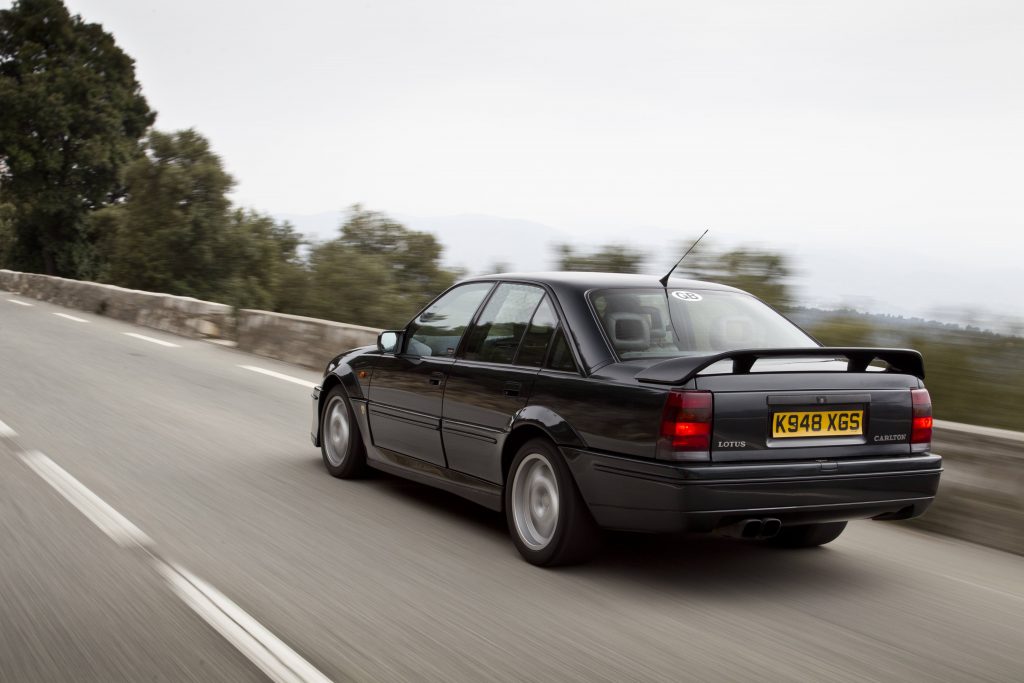
Unknown to Mike and his team at that point, GM Europe had its own proposals for the Senator (later to be available with a 24-valve 3.0-litre engine, much used by the UK police), and its reluctance to commission the project led to a change of focus to the new Vauxhall Carlton/Opel Omega.
“It was much stiffer vehicle that you could adapt and develop further, the five-link rear suspension was really well engineered, they had the 24-valve engine coming out, not only the 3-litre but the 3.6, and of course our turbocharging would be complementary – we’d already engineered and launched the turbo Esprit, a benchmark for turbocharging, which just shows the symbiotic relationship of all our projects.”
Finally the Lotus Carlton got the green light, based on the 3.0-litre Carlton GSi 24v. The benchmark BMW M5 produced 315bhp with 266lb ft, so Lotus and GM could have simply aimed a little higher. Instead it obliterated not only the M5, but also the Ferrari 348 and Porsche 911 Turbo with its 377bhp with 415lb ft torque.
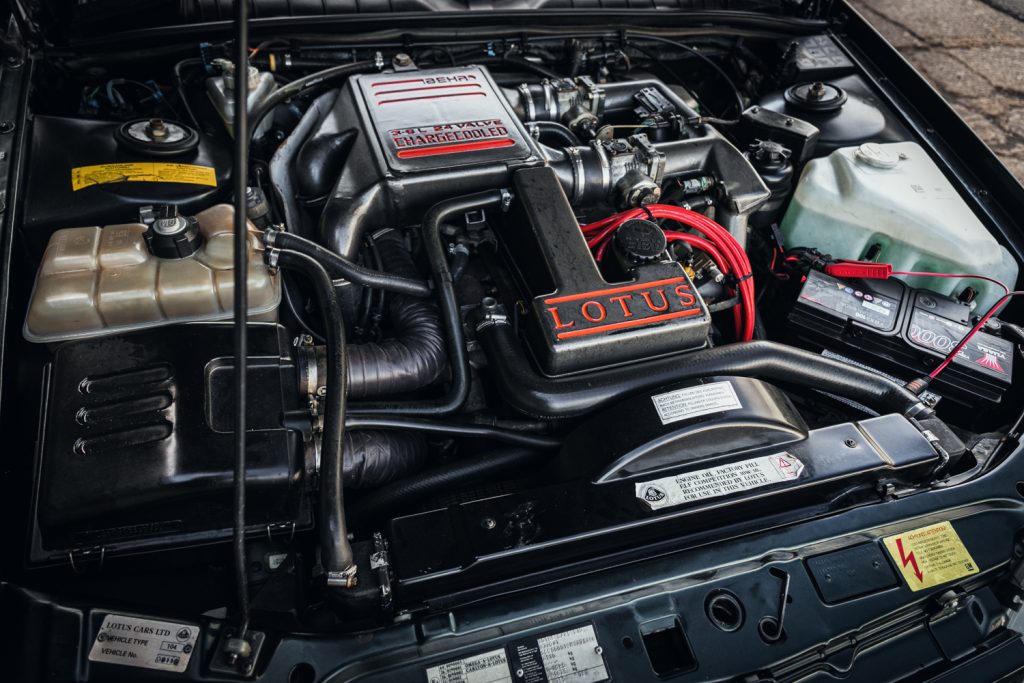
“I wanted supercar performance to push the performance envelope. I knew what our German friends at BMW and Mercedes and Porsche were exploring and planning and they weren’t hanging back,” remembers Mike. “We wanted to set the benchmark, globally, for acceleration, handling, refinement and primary safety before they did.”
Highlights of the final specification included a 3615cc straight-six with new Mahle pistons, uprated con-rods and a new crankshaft, plus twin Garrett T25 turbochargers and an intercooler. The engine was mated to a Corvette ZR1 gearbox and Holden Commodore V8 rear differential. Chassis and suspension changes included speed-sensitive power steering and self-levelling suspension from the Senator, and Lotus also fitted highly effective AP Racing brakes. The bodykit, 17-inch Ronal alloy wheels and Imperial Green paint were unique, as was an anthracite leather interior. Even the Goodyear Eagle tyres – “we’d worked with Goodyear right back to the M50 Elite and Esprit” – were specially developed with Lotus input.
Fifteen prototypes were planned and Mike assumed all would be built by Opel, but only 11 were produced, all at Lotus, with vehicle testing, development and dynamics led by Tony Shute, who went on to lead the development program for the Elise. “With the number of prototypes we had, in full use constantly, everything was hand to mouth – we couldn’t obtain the parts so resourced them ourselves,” explains Mike. “There was some axle tramp initially but we cured that with harder bushes for mounting the diff and trailing arms. Early problems with coning on the brake discs were solved with a ‘swan neck’ on the disc. Ultimately we achieved primary safety and secondary safety with exceptional performance for a four-seater saloon.”
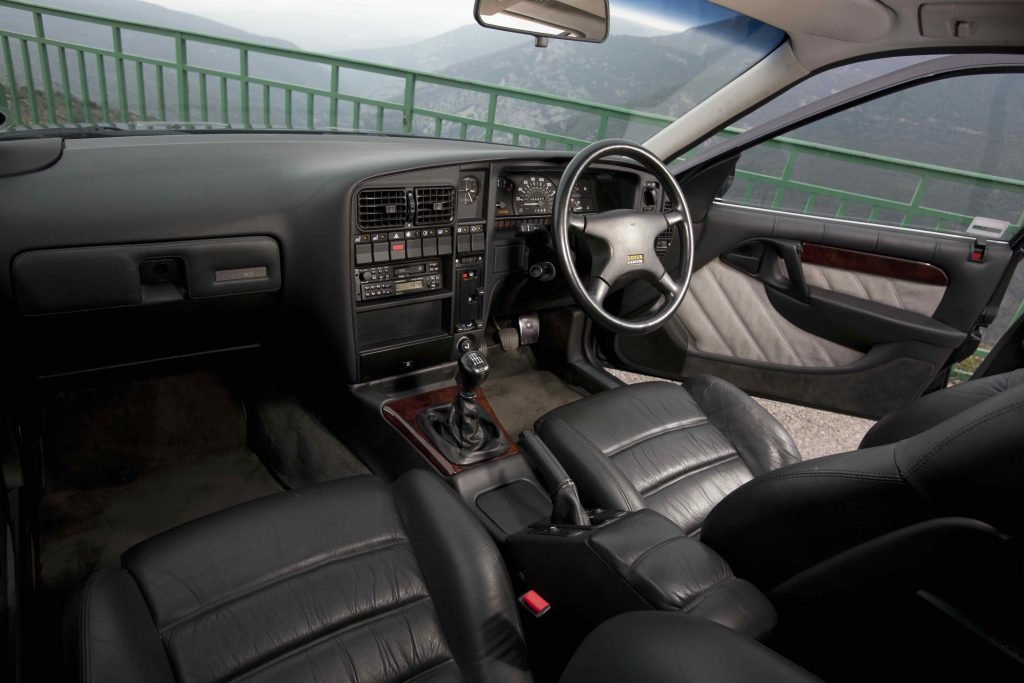
In testing, the 0-60mph sprint was covered in 5.2 seconds, 0-100mph in 11.5 and while the top speed was officially quoted as 176mph, Lotus test drivers saw 180mph with a following wind, and the car was ultimately certified to 182mph. Stopping power was equally impressive, with 20 stops from 100mph without fade. But Opel’s Dr Fritz Indra was concerned that Opel didn’t conduct the durability tests – it’s why it is called the Lotus Carlton – and why Lotus VIN numbers were used. Mike is too diplomatic to say so, but you get the impression the relationship between Opel and Lotus was strained, and the one between Vauxhall and Lotus far more productive.
At one point it looked as though Irmscher might build the Lotus Carlton, but Mike successfully lobbied for assembly at Hethel. Right-hand drive Carltons and left-hand-drive Omegas were shipped from Opel’s Russelsheim production line, not as basic bodyshells with slave wheels and no powertrain – as with the Talbot Sunbeam – but as fully completed Vauxhall Carlton GSIs. No prizes for guessing it wasn’t the most efficient way of doing things.
“The assembly area at Lotus was Factory 3, run by Dick Angier. It was a mini production area encompassing all aspects of car manufacturing and complicated enormously by having to strip a fully built car first! We plasma-cut the wheel arches and welded in new ones with clearance for the new wheels and tyres, then re-corrosion proofed and painted them, and it was the same with the transmission tunnel area – we’d designed the LT5 engine for the ZR1 Corvette and were able to use their transmission for its torque capability. Simon Wood did a fabulous job on the entire project including the engine [he was later to work on the Bugatti EB110], which we built in our own engine assembly shop. The complete installation, build and all the retrimming was completed in Factory 3 in 130 man hours.”
Ultimately, just 950 Lotus Carltons were produced from 1990 until 1992 (286 of them Lotus Carltons for the UK, and number 950 – another Carlton – literally fell off the Russelsheim production line and mysteriously arrived at Lotus some time later), far short of what had been initially planned. It cost £48,000, which was a small fortune 30 years ago. Today the car commands up to £70,000 in concours condition, according to the Hagerty Price Guide. A fair condition car is almost £40,000.

Mike never did get a Lotus Carlton as a company car, but he did use one in rather unusual circumstances. “I went to work for Jack Smith as an executive vice president of GM’s Asia Pacific Operations Corp [from 1992] and drove one quite a lot when I was occasionally in my GMOC homebase in Kuala Lumpur. The prime minister’s son owned one and I used to use his there. KL to Singapore was very fast I can assure you, but I won’t tell you how quickly! It was a unique car, a real wolf in sheep’s clothing and it was a tragedy from my perspective that because of that hiatus at the end [with the negative coverage], it damped down the marketing and sales effort that should have gone into it, which would have helped sell cars and further enhanced the Lotus brand image worldwide.”
Yet 30 years on, those limited volumes and the controversy surrounding its benchmark performance only make the Lotus Carlton more desirable – and make us wonder what Lotus Engineering could do with a Vauxhall Insignia today.
Driving the Lotus Carlton is a lesson in respect
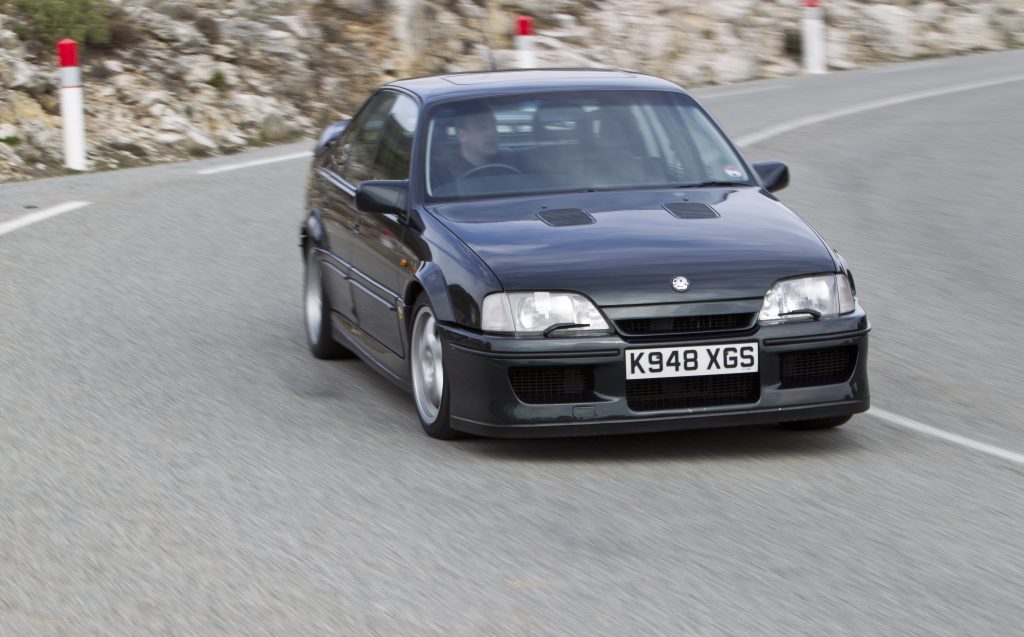
The Lotus Carlton wraps its devastating punch in a velvet glove, so when I drove Vauxhall’s own heritage car from Nice to Grenoble, writes Ben Barry, first impressions were of plush leather comfort and isolation. It took little time for the Carlton’s performance focus to bubble to the surface, with heavy steering, a meaty clutch and a low-speed ride that I recall being a little lumpy all setting the tone – though the gear shift was surprisingly light.
The turbocharged six-cylinder engine was smooth if fairly non-descript, but I still remember the kick. It takes a little while for the turbochargers to spool, but the lag isn’t too bad and once you’re into the meat of the powerband between 2500 and 5000rpm this remains a searingly quick car – one that simply shrugs off 1665kg and feels relentless in every gear.
The ride quickly eased once we left Nice, and actually it felt a very soft car by modern high-performance standards, which is good for compliance, but the body lean, kerbweight and heavy steering does make the Carlton feel a lot of car to hustle through corners.
Some of the roads were wet during our trip and at one point we trudged through snow on the Goodyear Eagles, but I learnt to trust it and when the large saloon did let go, the long wheelbase and tight-feeling limited-slip differential made for supremely predictable handling.
Times have of course moved on, but still the Lotus Carlton feels and commands respect like nothing else.
The dazzling Lotus Elise is 25 – do you know these 25 facts about Britain’s game-changer?













Impressive stats but it’s still butt-ugly. Sometimes the passage of time can change your impression of a car’s design; unfortunately not in this case …
I drove along side one leaving Silverstone after the Classic. It was immaculate. Wonderful car and the benchmark of the ’90s.